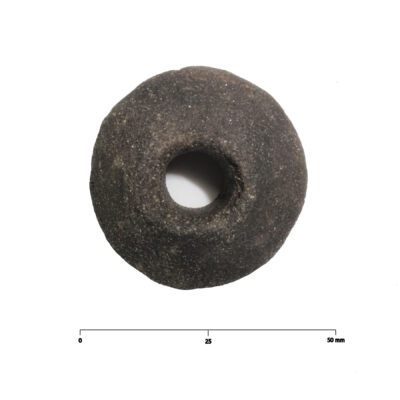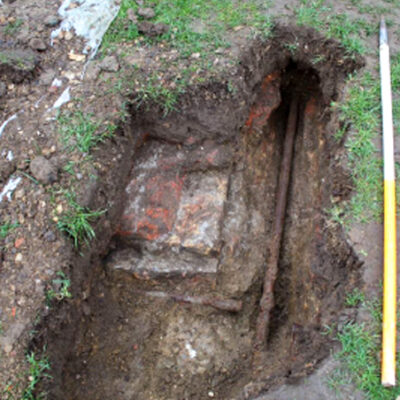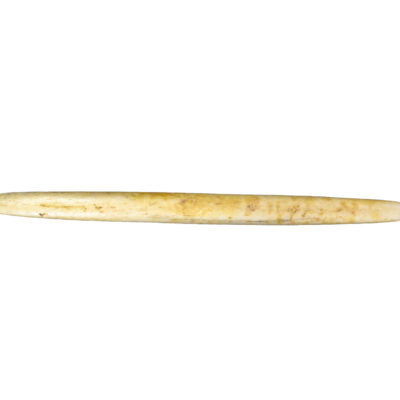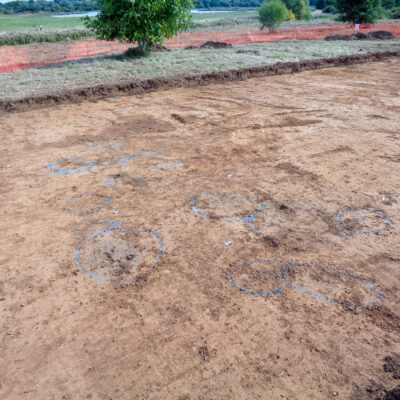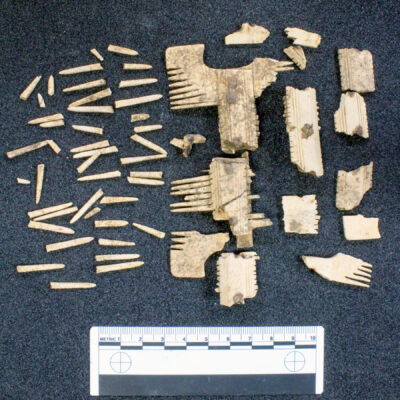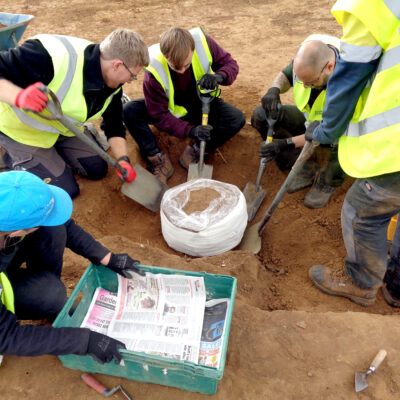Irthlingborough, Archaeological Strip, Map & Sample Excavation
Archaeological Evaluation revealed remains of a prehistoric cremation burial and a possible settlement; subsequent Strip, Map & Sample Excavation confirmed the presence of a Bronze Age burial ground, and evidence of multi phased habitation from the Iron Age period to modern times.

In Brief
Archaeological Programme of Work
Archaeological Evaluation
Archaeological Excavation
Key Points
- Programme of archaeological works
- 27 Early to Late Bronze Age cremation burials
- Presence of Iron Age settlement
- Significant landscape to the communities, close proximity to the river Nene
- Early Anglo-Saxon dwelling
Summary
The excavations revealed evidence of human occupation on the Site from the middle to late prehistoric period, as represented by Early to Late Bronze Age cremation burials within Area B, and an irregular rectangular-shaped enclosure of Middle/Late Iron Age date in Area A.
The enclosure, which was located on a raised plateau, was associated with two further gullies that seemed to form the entrance to another possible enclosure, and three domestic waste pits.
The early medieval period is represented by an Anglo-Saxon Sunken Feature Building or Grubenhaus; a large, shallow sub-circular pit with two post-holes located internally on either side; these probably held timber posts that supported a tent-like roof of thatch. This type of structure, was introduced into England in the 5th Century and was possibly brought by Germanic people from the continent during population movement in the post Roman era.
Medieval/post-medieval ditches provided evidence for the agricultural nature of the Site throughout these periods.
Results
Two separate areas (A and B), were excavated, measured c.1601 sqm and c.1316 sqm, respectively.
Archaeological investigations revealed evidence of an important Bronze Age cremation burial ground representing single and multiple burials of adults and children with a time frame for the use of the cemetery ranged from the Early to Late Bronze Age, consisted of 27 urned and un-urned cremations with no grave offerings.
Early Anglo-Saxon habitation evidence of a Sunken Feature Building (Grubenhaus) with rich in finds domestic debris recovered, such as, personal items (probably relics, Neolithic flint arrowhead, roman coin), tools for textile production, fragments from four bone combs, large quantities of early Anglo-Saxon pottery and animal bone.

